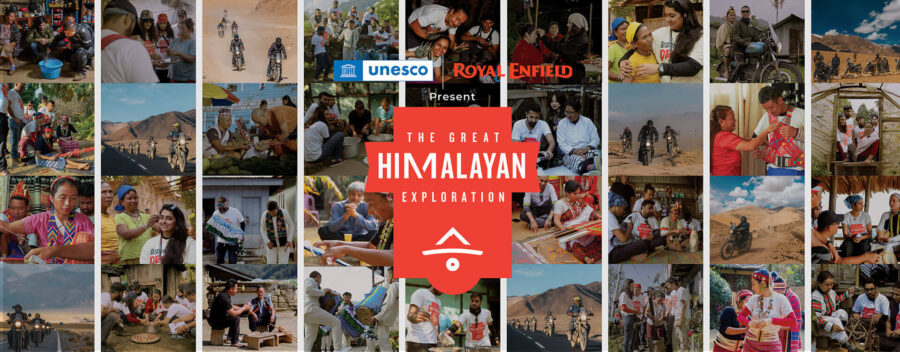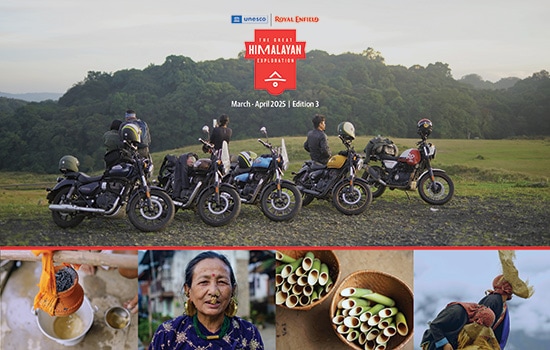Quick Overview:
- UNESCO and Royal Enfield kick off the third edition of The Great Himalayan Exploration in Sikkim.
- The expedition will document 10 unique Intangible Cultural Heritage (ICH) practices.
- Two rider-led groups will explore local traditions from March 3 to April 3, 2025.
UNESCO and Royal Enfield have joined forces once again for the third edition of The Great Himalayan Exploration. This year, the unique motorcycling expedition heads to Sikkim, focusing on documenting and preserving 10 Intangible Cultural Heritage (ICH) practices. The initiative aims to highlight the living cultural traditions that continue to shape local communities.
The exploration was flagged off on March 3, 2025, in Gangtok by Shri Aditya Golay (Tamang), a Member of the Sikkim Legislative Assembly. Two groups of rider-researchers will travel across the state until April 3, interacting with locals and documenting their customs.
Exploring Sikkim’s Cultural Tapestry
As defined by UNESCO, Intangible Cultural Heritage includes practices, knowledge, and skills recognized as part of a community’s cultural identity. Through this initiative, riders will engage with Sikkim’s diverse cultural landscape and highlight age-old traditions that persist despite modern influences.

Among the key ICH practices being explored are:
1. Bhumchu Festival
Held annually at Tashiding Monastery, this sacred ritual involves opening a pot of holy water to predict the year’s fortunes. It is one of the most significant spiritual events in Sikkim, drawing large crowds seeking blessings.
2. Lepcha Healing Practices
Traditional Lepcha healers, known as Bhumthings and Muns, use herbal medicine and spiritual ceremonies to treat physical and mental ailments. Their techniques reflect a holistic connection between nature and healing.
3. Cardamom Cultivation
Sikkim leads India in large cardamom production. The exploration will document the region’s organic farming methods and their role in sustaining rural livelihoods.
4. Yak Grazing and Nomadic Life
The Dokpas, Sikkim’s nomadic yak herders, continue to follow seasonal migration patterns. Their age-old practices support both their economy and the fragile alpine environment.
5. Dzumsa System of Governance
This self-governing system, unique to Lachen and Lachung, allows local elders to manage village affairs. It reflects a centuries-old model of community-led decision-making.
Other ICH practices include Sikkimese mask making, butter sculpture crafting for Buddhist rituals, and the Lepcha art of weaving. Each reflects the region’s deep-rooted spiritual and cultural heritage.
A Collaborative Effort for Cultural Preservation
The Great Himalayan Exploration represents a joint effort to preserve and promote cultural diversity. Through this immersive, rider-led approach, UNESCO and Royal Enfield aim to document and raise awareness about traditions that might otherwise fade over time.
The initiative also underscores the importance of sustainable tourism, encouraging deeper community engagement and cultural respect.
Final Thoughts
The third edition of The Great Himalayan Exploration continues to blend adventure with cultural preservation. By bringing lesser-known practices to light, the expedition offers a rare glimpse into Sikkim’s living heritage while emphasizing the value of protecting these traditions for future generations.
Also read: Classic Legends Introduce Industry-First Ownership Assurance Program

